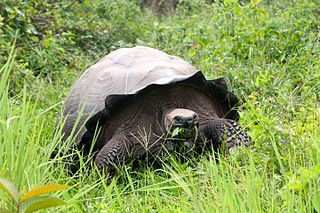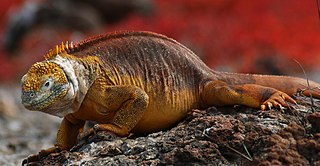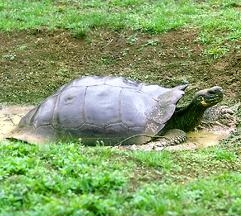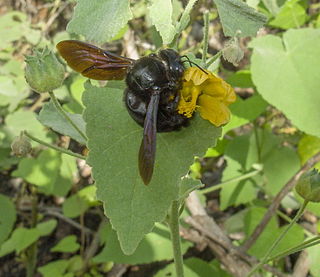 W
WAdaina scalesiae is a moth of the family Pterophoridae that is endemic to the Galapagos Islands, where it was discovered by Bernard Landry on Bella Vista on April 1, 1992, and on May 25 of the same year on the island of Santa Cruz. The species was also found in Volcan Darwin, a province 15 kilometres (9.3 mi) from Puerto Villamil, on May 25, and 400 metres (1,300 ft) above sea level on Pinta Island where it was found from March 13 to 21. The species is attracted to various lamps including mercury-vapor lamps.
 W
WAegialomys galapagoensis, also known as the Galápagos rice rat or Galápagos oryzomys, is a species of rodent in the family Cricetidae endemic to the Galápagos Islands.
 W
WAtteva hysginiella is a moth of the family Attevidae. It is endemic to the Galapagos Islands.
 W
WThe Galapagos barnacle blenny is a species of chaenopsid blenny endemic to coral reefs in the Galapagos Islands, in the southeast Pacific ocean. It can reach a maximum length of 6 cm (2.4 in) TL. The specific name honours a naturalist at the Charles Darwin Foundation, Academy Bay, Santa Cruz Island, Galápagos, Miguel Castro.
 W
WChelonoidis chathamensis, commonly known as the Chatham Island giant tortoise or the San Cristóbal giant tortoise, is a species of Galápagos tortoise endemic to San Cristóbal Island in the Galápagos.
 W
WChelonoidis donfaustoi, known as the eastern Santa Cruz tortoise, is a species of Galápagos tortoise living on Santa Cruz Island, within the Galápagos. Until 2015, C. donfaustoi was classified as part of another species, Chelonoidis porteri.
 W
WChelonoidis vicina, commonly known as the Cerro Azul giant tortoise, Iguana Cove tortoise or the Isabela Island giant tortoise, is a species of Galápagos tortoise endemic to Isabela Island in the Galápagos.
 W
WConolophus marthae, the Galápagos pink land iguana, is a species of lizard of the family Iguanidae. This critically endangered iguana is native only to the Wolf Volcano in northern Isabela Island of the Galápagos (Ecuador). It has a pink body with some dark stripes, prompting some to call it the pink iguana or the Galápagos rosy iguana. The species was first discovered in 1986 and was identified as a separate species, distinct from the Galápagos land iguana, early in 2009. This species is the only example of ancient diversification in the genus Conolophus and is one of the oldest events of divergence ever recorded in the Galápagos.
 W
WConolophus pallidus is a species of lizard in the family Iguanidae. It is one of three species in the genus Conolophus and is endemic to Santa Fe Island in the Galapagos.
 W
WChelonoidis phantasticus is a species of Galápagos tortoise that was discovered in 1906 and not seen again until a single female was discovered living on Fernandina Island by an expedition in February 2019.
 W
WThe Galápagos fur seal breeds on the Galápagos Islands in the eastern Pacific, west of mainland Ecuador.
 W
WThe Galapagos land iguana is a species of lizard in the family Iguanidae. It is one of three species of the genus Conolophus. It is endemic to the Galápagos Islands (Ecuador), in the dry lowlands of Fernandina, Isabela, Santa Cruz, North Seymour, Baltra, and South Plaza Islands.
 W
WHellinsia cristobalis is a moth of the family Pterophoridae. It is found on the Galapagos Islands.
 W
WHellinsia devriesi is a moth of the family Pterophoridae. It is found on the Galapagos Islands and Guadeloupe.
 W
WHellinsia nephogenes is a moth of the family Pterophoridae. It is found on the Galapagos Islands.
 W
WThe Hood Island giant tortoise is a species of Galápagos tortoise endemic to Española Island in the Galápagos.
 W
WThe hybrid iguana is a first-generation hybrid, the result of intergeneric breeding between a male marine iguana and a female Galapagos land iguana on South Plaza Island in the Galápagos Islands, where the territories of the two species overlap.
 W
WThe marine iguana, also known as the sea iguana, saltwater iguana, or Galápagos marine iguana, is a species of iguana found only on the Galápagos Islands (Ecuador). Unique among modern lizards, it is a marine reptile that has the ability to forage in the sea for algae, which makes up almost all of its diet. Large males are able to dive to find this food source, while females and smaller males feed during low tide in the intertidal zone. They mainly live in colonies on rocky shores where they bask after visiting the relatively cold water or intertidal zone, but can also be seen in marshes, mangrove and beaches. Large males defend territories for a short period, but smaller males have other breeding strategies. After mating, the female digs a nest hole in the soil where she lays her eggs, leaving them to hatch on their own a few months later.
 W
WMegaoryzomys curioi, also known as the Galápagos giant rat, is an extinct species of sigmodontine rodent, known only from Santa Cruz Island in the Galápagos Islands. It likely met its demise when European settlers introduced invasive species to the island. It is the only species in the genus Megaoryzomys. Its relationships are currently unclear; it has been placed in both Oryzomyini and Thomasomyini in the past.
 W
WMicrolophus albemarlensis, the Galápagos lava lizard, also known as the Albemarle lava lizard, is a species of lava lizard. It is endemic to the Galápagos Islands, where it occurs on several islands in the western archipelago: the large islands Isabela, Santa Cruz, Fernandina, Santiago and Santa Fe, as well as several smaller islands: Seymour, Baltra, Plaza Sur, Daphne Major and Rábida. It is the most widespread of the Galápagos species of Microlophus, the others only occurring on single islands. Some authors however, consider populations on Santiago, Santa Cruz, and Santa Fe to be distinct species. The species is commonly attributed to the genus Microlophus but has been historically placed in the genus Tropidurus.
 W
WThe San Cristóbal lava lizard is a species of lava lizard endemic to San Cristóbal Island in the Galápagos Islands. The species is commonly attributed to the genus Microlophus but has been attributed to the genus Tropidurus. They are currently under threat by invasive cats on the island.
 W
WMicrolophus delanonis, the Española lava lizard or Hood lava lizard, is endemic to the Galapagos island of Española. The species is commonly attributed to the genus Microlophus but has been attributed to the genus Tropidurus.
 W
WMicrolophus duncanensis, the Pinzón lava lizard, is a species of lava lizard endemic to the Galapagos Island of Pinzón. The species is commonly attributed to the genus Microlophus but has been attributed to the genus Tropidurus.
 W
WMicrolophus grayii, commonly known as the Floreana lava lizard, is a species of lava lizard in the family Tropiduridae. The species is endemic to the Galapagos island of Floreana.
 W
WMicrolophus habelii, commonly known as the Marchena lava lizard, is a species of lava lizard endemic to the Galapagos island of Marchena.
 W
WThe Santa Cruz lava lizard is a species of lava lizard endemic to the Galapagos island of Santa Cruz.
 W
WMicrolophus pacificus, the common Pacific iguana, is a species of lava lizard endemic to the Galapagos island of Pinta. The species is commonly attributed to the genus Microlophus but has been attributed to the genus Tropidurus.
 W
WNesoryzomys is a genus of rodent in the tribe Oryzomyini of family Cricetidae, endemic to the Galápagos Islands. Other rodents restricted to the Galápagos include Megaoryzomys curioi and Aegialomys galapagoensis.
 W
WThe Pinta Island tortoise, also known as the Pinta giant tortoise, Abingdon Island tortoise, or Abingdon Island giant tortoise, is a species of Galápagos tortoise native to Ecuador's Pinta Island that is most likely extinct.
 W
WChelonoidis duncanensis, commonly known as the Pinzón Island giant tortoise, is a species of Galápagos tortoise endemic to Pinzón Island in the Galápagos.
 W
WThe Galápagos racer is a colubrid snake in the genus Pseudalsophis that is endemic to the Galápagos Islands. It is a mildly venomous constrictor and is considered not aggressive and harmless to humans. The two subspecies are the eastern and western racers, the latter being larger, longer, and darker than the former. The western subspecies specializes in hunting fish, while both subspecies eat small reptiles, eggs, rodents, and bird hatchlings. The Galapagos racer is near threatened due to recently introduced species that feed on snake eggs, including pigs, rats, mice, and cats. It is one of only three species of snakes on the Galápagos Islands, and it was first described in 1860. In November 2016, a video clip from the BBC series Planet Earth II showing a group of Galápagos racers hunting marine iguana hatchlings became a viral trend.
 W
WThe Santiago Island giant tortoise, also known as the James Island tortoise, is a species of Galápagos tortoise endemic to Santiago Island in the Galápagos.
 W
WThe large painted locust is endemic to the Galapagos Islands of Ecuador, except Española Island. The locusts form a large part of the diet of the Galápagos hawk and lava lizards. Can be up to 8 cm long.
 W
WThe Galápagos tortoise complex or Galápagos giant tortoise complex are the largest living species of tortoise. Modern Galápagos tortoises can weigh up to 417 kg (919 lb). Today, giant tortoises exist on only two remote archipelagos: the Galápagos Islands about 1,000 km (620 mi) due west of mainland Ecuador; and Aldabrachelys gigantea of Aldabra in the Indian Ocean, 700 km (430 mi) east of Tanzania.
 W
WUtetheisa galapagensis is a moth of the family Erebidae. It is known only from the Galápagos island of San Cristóbal. It is probably endemic to the archipelago.
 W
WUtetheisa henrii is a moth of the family Erebidae. It is probably endemic to the Galápagos island of San Cristóbal.
 W
WThe Volcán Wolf giant tortoise, also known as the Wolf Volcán giant tortoise, is a species of Galápagos tortoise native to the north side of Ecuador's Isabela Island. It is most commonly found on the northern, western, and southwestern slopes of Volcán Wolf, the volcano that it is named for. Having evolved to live in a specific environment, C. becki only occupies an estimated range of about 263 square kilometers. An estimated 1,150 Volcán Wolf giant tortoises inhabit Volcán Wolf.
 W
WThe western Santa Cruz tortoise is a species of Galápagos tortoise endemic to Santa Cruz Island in the Galápagos. They are found only on the southwestern slopes of the island, with an estimated range of 141 sq. kilometers. There are approximately 3400 individuals in the wild, and have seen rising numbers in population, despite being critically endangered. MtDNA evidence shows that there are actually three genetically distinct populations on Santa Cruz Island. They are characterised by a black, oval carapace that is domed, higher in the centre than in the front, and broad anteriorly.
 W
WXylocopa darwini, the Galápagos carpenter bee, is one of only three species of bees found in the Galápagos Islands, to which it is endemic. This species is sexually dimorphic, is found on 75% of the largest islands, and is known for its complex behavior. As the only native bee, Xylocopa darwini serves as an important primary pollinator within the plant-pollinator network of the archipelago.
 W
WXylophanes norfolki is a moth of the family Sphingidae. It is known from the Galapagos Islands.